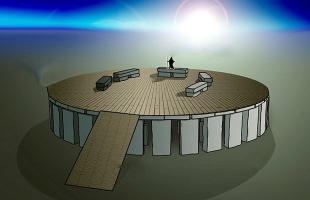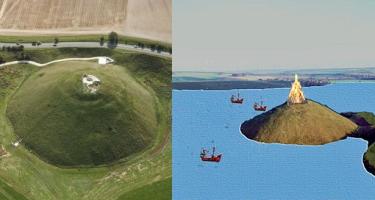Copy Link
Add to Bookmark
Report
AIList Digest Volume 2 Issue 064

AIList Digest Friday, 25 May 1984 Volume 2 : Issue 64
Today's Topics:
Courses - Expert Systems Syllabus Request,
Games - Core War Sources,
Logic Programming - Boyer-Moore Prover,
AI Books - AI and Business,
Linguistics - Use of "and",
Scientific Method - Hardware Prototyping
----------------------------------------------------------------------
Date: 23 May 1984 1235-EDT
From: CASHMAN at DEC-MARLBORO
Subject: Expert systems course
Has anyone developed an expert systems course using the book "Building Expert
Systems" (Hayes-Roth & Lenat) as the basic text? If so, do you have a
syllabus?
-- Paul Cashman (Cashman@DEC-MARLBORO)
------------------------------
Date: Thursday, 24 May 1984 17:17:49 EDT
From: Michael.Mauldin@cmu-cs-cad.arpa
Subject: Core War...
Some people are having problems FTPing the core war source... If you
prefer, just send me a note and I'll mail you the source over the net.
It is written in C, runs on Unix (4.1 immediately, or 4.2 with 5
minutes of hacking), and is mailed in one file of 42K characters.
Michael Mauldin (Fuzzy)
Department of Computer Science
Carnegie-Mellon University
Pittsburgh, PA 15213
(412) 578-3065, mauldin@cmu-cs-a.
------------------------------
Date: 24-May-84 12:48:20-PDT
From: jbn@FORD-WDL1.ARPA
Subject: Re: Boyer-Moore prover on UNIX systems
[Forwarded from the Stanford bboard by Laws@SRI-AI.]
The Boyer-Moore prover is now available for UNIX systems. While I
did the port, Boyer and Moore now have my code and have integrated it
into their generic version of the prover. They are handling distribution.
The prover is now available for the Symbolics 3600, TOPS-20 systems,
Multics, and UNIX for both VAXen and SUNs. There is a single version with
conditional compilation, it resides on UTEXAS-20, and can be obtained via
FTP. Send requests to BOYER@UTEXAS-20 or MOORE@UTEXAS-20, not me, please.
The minimum machine for the prover is a 2MB UNIX system with Franz Lisp
38.39 or later, about 20-80MB of disk, and plenty of available CPU time.
If you want to know more about the prover, read Boyer and Moore's
``A Computational Logic'' (1979, Academic Press, ISBN 0-12-122950-5).
Using the prover requires a thorough understanding of this work.
Please pass this on to all who got the last notice, especially
bulletin boards and news systems. Thanks.
Nagle (@SCORE)
------------------------------
Date: 23 May 1984 13:50:30-PDT (Wednesday)
From: Adrian Walker <ADRIAN%ibm-sj.csnet@csnet-relay.arpa>
Subject: AI & Business
The summary on AI for Business is most interesting.
You might like to list also the book:
Artificial Intelligence Applications for Business
Walter Reitman, Editor
Ablex Publishing Corporation, Norwood, New Jersey, 1984
It's in the bookstores now.
Adrian Walker
IBM SJ Research k51/282, tieline 276-6999, outside 408-256-6999
vnet: sjrlvm1(adrian) csnet: Adrian@ibm-sj
arpanet: Adrian%ibm-sj@csnet-relay
------------------------------
Date: 18 May 84 9:34:56-PDT (Fri)
From: pur-ee!CS-Mordred!Pucc-H.Pucc-I.ags @ Ucb-Vax
Subject: Re: Use of "and" - (nf)
Article-I.D.: pucc-i.281
We are blinded by everyday usage into putting an interpretation on
"people in Indiana and Ohio"
that really isn't there. That phrase should logically refer to
1. The PEOPLE of Indiana, and
2. The STATE of Ohio (but not the people).
If someone queries a program about "people in Indiana and Ohio", a
reasonable response by the program might be to ask,
"Do you mean people in Indiana and IN Ohio?"
which may lead eventually to the result
"There are no people in Indiana and in Ohio."
Dave Seaman
..!pur-ee!pucc-i:ags
------------------------------
Date: 20 May 84 8:23:00-PDT (Sun)
From: ihnp4!inuxc!iuvax!brennan @ Ucb-Vax
Subject: Re: Use of "and"
Article-I.D.: iuvax.3600002
Come on, Dave, I think you missed the point. No person would
have any trouble at all understanding "people in Indiana and Ohio",
so why should a natural language parser have trouble with it???
JD Brennan
...!ihnp4!inuxc!iuvax!brennan (USENET)
Brennan@Indiana (CSNET)
Brennan.Indiana@CSnet-Relay (ARPA)
------------------------------
Date: 21 May 84 12:54:15-PDT (Mon)
From: harpo!ulysses!allegra!dep @ Ucb-Vax
Subject: Re: Use of "and"
Article-I.D.: allegra.2484
Why does everyone assume that there is no one who is both in Indiana and Ohio?
The border is rather long and it seem perfectly possible that from time to
time there are people with one foot in Inidana and the other in Ohio - or for
that matter, undoubtedly someone sleeps with his head in I and feet in O
(or vice versa).
Lets hear it for the stately ambiguous!
------------------------------
Date: Sun 20 May 84 18:56:36-PDT
From: John B. Nagle <NAGLE@SU-SCORE.ARPA>
Subject: Quote
[Forwarded from the Stanford bboard by Laws@SRI-AI.]
``... the normal mode of operation in computer science has been abandoned
in the realm of artificial intelligence. The tendency has been to propose
solutions without perfecting them.''
Harold Stone, writing about the NON-VON machines
being proposed at Columbia
from Mosaic, the magazine of the National Science
Foundation, vol 15, #1, p. 24.
------------------------------
Date: Tue 22 May 84 18:43:35-PDT
From: John B. Nagle <NAGLE@SU-SCORE.ARPA>
Subject: Re: Quote, background of
There have been some requests for more context on the quote I posted.
The issue is that the Columbia people working on non-von Neumann
architectures are now proposing to build NON-VON 4, their fourth
machine. However, NON-VONs 1 to 3 are either unfinished or were never
started, according to the writer quoted, and the writer doesn't think
much of this.
My point in posting this is that it is significant that it appeared
in the National Science Foundation's publication. The people with the
money may be losing patience.
------------------------------
Date: Mon 21 May 84 22:06:44-PDT
From: Tom Dietterich <DIETTERICH@SUMEX-AIM.ARPA>
Subject: Re: Quote
[Forwarded from the Stanford bboard by Laws@SRI-AI.]
From Nagle (quoting Harold Stone)
``... the normal mode of operation in computer science has
been abandoned in the realm of artificial intelligence. The
tendency has been to propose solutions without perfecting
them.''
Which parse of this is correct? Has the tendency to "propose
solutions without perfecting them" held in the remainder of computer
science, or in artificial intelligence? Either way I think it is
ridiculous. Computer Science is so young that there are very few
things that we have "perfected". We do understand alpha-beta search,
LALR(1) parser generators, and a few other things. But we haven't
come near to perfecting a theory of computation, or a theory of the
design of programming languages, or a theory of heuristics.
--Tom
------------------------------
Date: Wed 23 May 84 00:16:43-EDT
From: David Shaw <DAVID@COLUMBIA-20.ARPA>
Subject: Re: FYI, again
[Forwarded from the Stanford bboard by Laws@SRI-AI.]
Tom,
I have just received a copy of your reaction to Harold Stone's criticism of
AI, and in particular, of the NON-VON project. In answer to your question,
I'm certain, based on previous interactions with Harold, that the correct
parsing of his statement is captured by the contention that AI "proposes
solutions without perfecting them", while "the normal mode of operation in
computer science" perfects first, then proposes (and implements).
I share your feelings (and those expressed by several other AI researchers
who have written to me in this regard) about his comments, and would in
fact make an even stronger claim: that the "least-understood" areas in AI,
and indeed in many other areas of experimental computer science research,
often turn out in the long run to be the most important in terms of
ultimate practical import. I do not mean to imply that concrete results in
such areas as the theories of heuristic search or resolution
theorem-proving are not important, or should not be studied by those
interested in obtaining results of practical value. Still, it is my guess
that, for example, empirical findings based on real attempts to implement
"expert systems", while lacking in elegance and mathematical parsimony, may
well prove to have an equally important long-term influence on the field.
This is certainly not true in many fields of computer science research.
There are a number of areas in which "there's nothing so practical as a
good theory". In AI, however, and especially in the construction of
non-von Neumann machines for AI and other symbolic applications, the
single-minded pursuit of generality and rigor, to the exclusion of (often
imperfectly directed) experimentation, would in many cases seem to be a
prescription for failure.
Those of us who experiment in silicon as well as instructions have recently
been the targets of special criticism. Why, our critics ask, do we test
our ideas IN HARDWARE before we know that we have found the optimal
solutions for all the problems we claim to address? Doesn't such behavior
demonstrate a lack of knowledge of the published literature of computer
architecture? Aren't we admitting defeat when we first build one machine,
then construct a different one based on what we have learned in building
the first? My answer to these criticisms is based observation that, in the
age of VLSI circuits, computer-aided logic design, programmable gate
arrays, and quick-turnaround system implementation, the experimental
implementation of hardware has taken on many of the salient qualities of
the experimental implementation of software.
Like their counterparts in software-oriented research, contemporary
computer architects often implement hardware in the course of their
research, and not only at the point of its culmination. Such
experimentation helps to explicate "fuzzy" ideas, to prune the tree of
possible architectural solutions to given problems, and to generate actual
(as opposed to asymptotic or approximate) data on silicon area and
execution time expenditures. Such experimentation would not be nearly so
critical if it were now possible to reliably predict the detailed operation
of a complex system constructed using a large number of custom-designed
VLSI circuits. Unfortunately, it isn't. In the real world, efforts to
advance the state of the art in new computer architectures without engaging
in the implementation of experimental prototypes presently seem to be as
futile as efforts to advance our understanding of systems software without
ever implementing a compiler or operating system.
In short, it is my feeling that "dry-dock" studies of "new generation"
computer architectures may now be of limited utility at best, and at worst,
seriously misleading, in the absence of actual experimentation. Here, the
danger of inadequate study in the abstract seems to be overshadowed by the
danger of inadequate "reality-testing", which often leads to the rigorous
and definitive solution of practically irrelevant problems.
It's my feeling that Stone's comments reflect a phenomenon that Kuhn has
described in "The Structure of Scientific Revolutions" as characteristic of
a "shift of paradigm" in scientific research. I still remember my reaction
as a graduate student at Stanford when my advisor, Terry Winograd, told our
research group that, in many cases, an AI researcher writes a program not
to study the results of its execution, but rather for the insight gained in
the course of its implementation. A mathematician by training, I was
distressed by this departure from my model of mathematical (proof of
theorem) and scientific (conjecture and refutation) research. In time,
however, I came to believe that, if I really wanted to make new science in
my chosen field, I might be forced to consider alternative models for the
process of scientific exploration.
I am now reconciled to this shift of paradigm. Like most paradigm shifts,
this one will probably encounter considerable resistance among those whose
scientific careers have been grounded in a different set of rules. Like
most paradigm shifts, its critics are likely to include those who, like
Harold Stone, have made the most significant contributions within the
constraints of earlier paradigms. Like most paradigm shifts, however, its
value will ultimately be assessed not in terms of its popularity among such
scientists, but in rather in terms of its contribution to the advancement
of our understanding of the area to which it is applied.
Personally, I find considerable merit in this new research paradigm, and
plan to continue to devote a large share of my efforts to the experimental
development and evaluation of architectures for AI and other symbolic
applications, in spite of the negative reaction such efforts are now
encountering in certain quarters. I hope that my colleagues will not be
dissuaded from engaging in similar research activities by what I regard as
the transient effects of a fundamental paradigm shift.
David
------------------------------
End of AIList Digest
********************
























